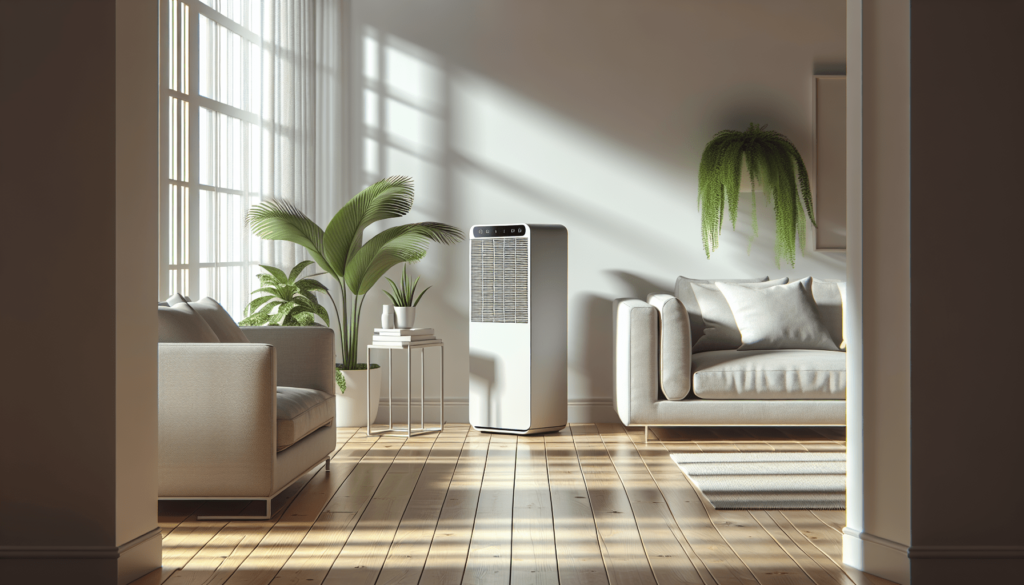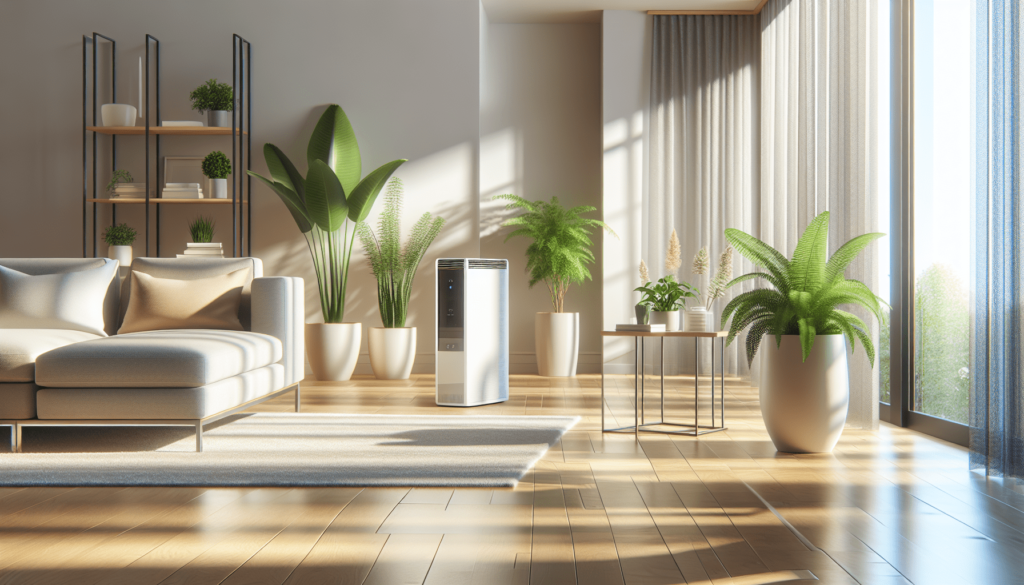Welcome to “Essential Tips to Reduce Allergens in Your Living Area”! You will discover straightforward and practical advice to help minimize outdoor allergens that sneak into your cozy living space. By implementing these tips, you can create a healthier, more comfortable environment for yourself and your loved ones. From keeping windows closed during high pollen seasons to using air purifiers effectively, you’ll find simple strategies to breathe easier and live better. Let’s dive in and make your home a haven of clean, fresh air! Have you ever walked into your living room and suddenly felt your eyes start to itch or your nose begin to tingle? If so, you’re not alone. Allergens can find their way into your living area so easily that it feels like a never-ending battle. But don’t worry – there are plenty of ways to reduce the allergens in your living space and help you breathe easier.

Understanding Common Allergens
Before diving into tips and tricks, it’s important to understand what allergens are and where they come from. Allergens are substances that trigger allergic reactions in susceptible individuals. These can come from numerous sources, and generally fall into two categories: indoor and outdoor.
Indoor Allergens
Indoor allergens are exactly what they sound like: allergens that are already inside your home.
| Allergen | Common Sources | Symptoms |
|---|---|---|
| Dust Mites | Bedding, upholstery | Sneezing, itchy eyes, congestion |
| Pet Dander | Hair, skin flakes | Sneezing, itchy skin, asthma |
| Mold | Bathrooms, basements | Coughing, nasal congestion, wheezing |
| Cockroach Droppings | Kitchen, crevices | Watery eyes, runny nose, asthma |
Outdoor Allergens
These allergens originate outside the home but can easily migrate indoors.
| Allergen | Common Sources | Symptoms |
|---|---|---|
| Pollen | Trees, grass, flowers | Runny nose, itchy eyes, sneezing |
| Fungal Spores | Wet leaves, mulch piles | Skin rashes, coughing, eye irritation |
| Pollution | Traffic, industrial sites | Respiratory issues, sore throat |
Understanding these allergens can help you tackle the problem more effectively.
Reduce Allergens From Outdoor Sources Entering Your Home
Often, we focus on dealing with allergens already in our living area, but what if you could stop some of them from entering in the first place?
Maintain a Clean Entryway
Your home’s entryway is your first line of defense against outdoor allergens. Implement some simple habits to reduce the influx of allergens.
- Shoes Off Policy: Encourage everyone to remove their shoes before entering the main living area. Shoes can track in pollen, dirt, and other debris.
- Welcome Mats: Use two mats – one outside the door for wiping shoes and one just inside to catch any remaining particles.
- Regular Cleaning: Sweep and mop entryways regularly to prevent buildup of allergens.
Use High-Quality Air Filters
Your HVAC (Heating, Ventilation, and Air Conditioning) system can be a strong ally in the battle against allergens, provided it’s equipped with high-quality air filters.
- HEPA Filters: A High-Efficiency Particulate Air (HEPA) filter can trap particles as small as 0.3 micrometers, making it excellent for capturing pollen and dust.
- Change Filters Regularly: Be sure to change your filters according to the manufacturer’s recommendations – typically every three months.
- Professional Maintenance: Schedule annual maintenance checks to ensure your HVAC system is running efficiently.
Seal Windows and Doors
Even the tiniest gaps and cracks around your windows and doors can be a gateway for outdoor allergens.
- Weatherstripping: Apply weatherstripping around all windows and doors to close gaps.
- Caulking: Use caulk to seal any cracks or gaps in window frames and door edges.
- Draft Stoppers: Install door sweeps or draft stoppers on exterior doors.
Mind Your Garden
Believe it or not, your garden could be contributing to the allergens inside your home. Here are some tips to make your garden more allergy-friendly:
- Low-Allergen Plants: Opt for plants that produce minimal pollen. Look for female variants when applicable, as they do not produce pollen.
- Strategic Planting: Plant trees and shrubs away from windows and doors to minimize pollen entering the home.
- Yard Maintenance: Regularly mow the lawn and trim hedges, but try to do these activities in the morning when pollen counts are lower.
Tips for Reducing Indoor Allergens
Now let’s focus on the allergens already making themselves at home indoors. Here are some effective tips to keep your living area as allergen-free as possible.
Keep Your Home Clean
A thorough and regular cleaning routine is your best defense against indoor allergens.
Dusting
- Use Microfiber Cloths: These are more effective at trapping dust than traditional dusters.
- High to Low: Always dust top shelves and high corners first, and work your way down to avoid spreading dust.
- Electronics: Be sure to dust frequently around electronics, which often attract dust.
Vacuuming
- HEPA Filter Vacuum: Invest in a vacuum cleaner with a HEPA filter to ensure allergens are trapped rather than recirculated into the air.
- Regular Schedule: Aim to vacuum at least twice a week, focusing on high-traffic areas.
- Under Furniture: Don’t forget to vacuum under furniture and behind large items such as the sofa or TV stand.
Mopping
- Damp Mop: Use a damp mop on hard floors to catch dust that vacuuming may miss.
- Natural Cleaners: Opt for natural cleaning solutions to avoid introducing harsh chemicals that could aggravate allergies.
Control Humidity Levels
High humidity can promote the growth of mold and dust mites. Here’s how to manage humidity effectively:
- Dehumidifiers: Use dehumidifiers in damp areas like basements and bathrooms.
- Ventilation: Make sure rooms are well-ventilated by opening windows or using exhaust fans.
- Monitor Levels: Use a hygrometer to keep an eye on indoor humidity levels, aiming for 30-50%.
Manage Textiles
Textiles like curtains, rugs, and upholstery can harbor allergens. Here’s how to keep them in check:
Bedding
- Wash Regularly: Wash bedding in hot water at least once a week.
- Allergen-Proof Covers: Use allergen-proof covers on mattresses and pillows.
Carpets and Rugs
- Frequent Cleaning: Vacuum carpets and rugs frequently.
- Deep Cleaning: Have carpets professionally cleaned at least once a year.
- Opt for Low-Pile: Low-pile rugs are easier to clean and less likely to trap allergens.
Curtains and Upholstery
- Washable Materials: Choose curtains and upholstery that can be easily washed.
- Vacuum Upholstery: Vacuum upholstered furniture regularly using an attachment.
Pet Care
If you have pets, they could be a significant source of indoor allergens. Here’s how to mitigate their impact:
- Regular Grooming: Bathe and groom your pets regularly to reduce dander.
- No-Go Zones: Keep pets out of certain areas, like bedrooms, to reduce allergen exposure.
- Air Purifiers: Use air purifiers in rooms where pets spend the most time to help capture pet dander.
Additional Tips for Specific Rooms
Each room in your house may have its unique allergen challenges. Here’s how to manage allergens in some key areas:
Bedroom
- Minimal Furniture: Less furniture means fewer places for dust to accumulate.
- Hypoallergenic Bedding: Invest in hypoallergenic pillows and mattresses.
- Air Purifier: Use an air purifier to continuously filter out allergens.
Living Room
- Leather Furniture: If possible, choose leather or faux leather furniture, as these materials don’t trap allergens as easily as fabric.
- Air Quality Monitoring: Use a smart air quality monitor to keep track of allergen levels.
Bathroom
- Exhaust Fan: Always use the exhaust fan during and after showers to reduce humidity.
- Mold-Resistant Materials: Use mold-resistant paint and materials.
- Regular Cleaning: Clean tiles and grouting with a mold-killing solution regularly.
Kitchen
- Clean Gutters and Vents: Regularly check and clean kitchen gutters and vents, as these can harbor mold.
- Sealed Containers: Store food in sealed containers to prevent attracting pests, which can create allergens.
- Waste Disposal: Empty waste bins frequently and ensure they have tight-fitting lids.

Long-Term Strategies
In addition to daily and weekly tasks, some long-term strategies can significantly reduce allergens in your living area.
Invest in an Air Purifier
For effective, continuous air cleaning, invest in a high-quality air purifier. HEPA air purifiers are excellent for capturing small particles such as pollen, dust mites, and pet dander.
Professional Cleaning Services
Consider hiring professional cleaning services for a deep clean at least twice a year. Professionals can reach areas that are hard to clean and use equipment that can remove deep-seated allergens.
Home Renovations
If you’re planning any home renovations, take the opportunity to make allergen-reducing choices, such as:
- Hardwood Flooring: If replacing floors, consider installing hardwood or tile instead of carpet.
- Built-In Air Filters: Install built-in air filters and ventilation systems.
- Mold-Resistant Materials: Use mold-resistant materials, especially in damp areas like bathrooms and basements.
Conclusion
Reducing allergens in your living area is a continuous process, but it is entirely doable. By understanding the sources of allergens and implementing these tips for both indoor and outdoor allergen management, you can create a more comfortable and healthy living environment. You don’t need to tackle everything at once – start small, make consistent efforts, and soon you’ll breathe easier in your own home. After all, everyone deserves to live free from the discomfort and irritation that allergens can bring. Happy cleaning!
